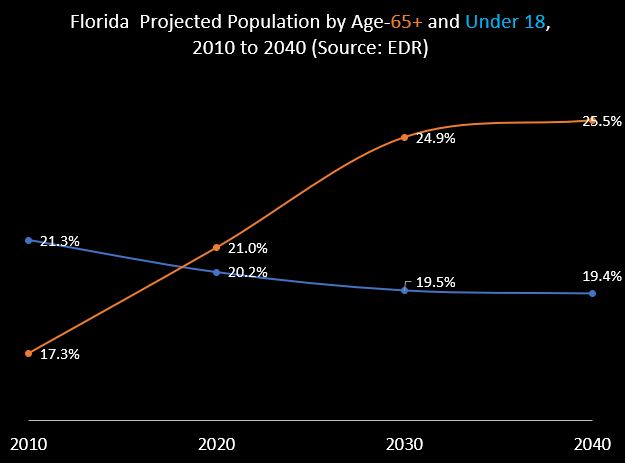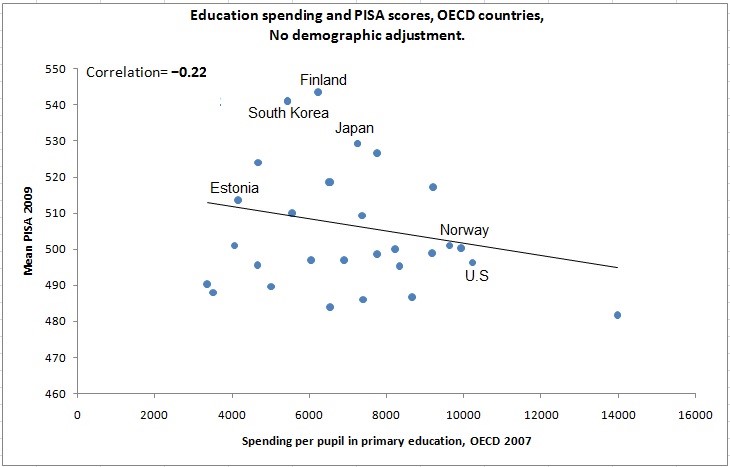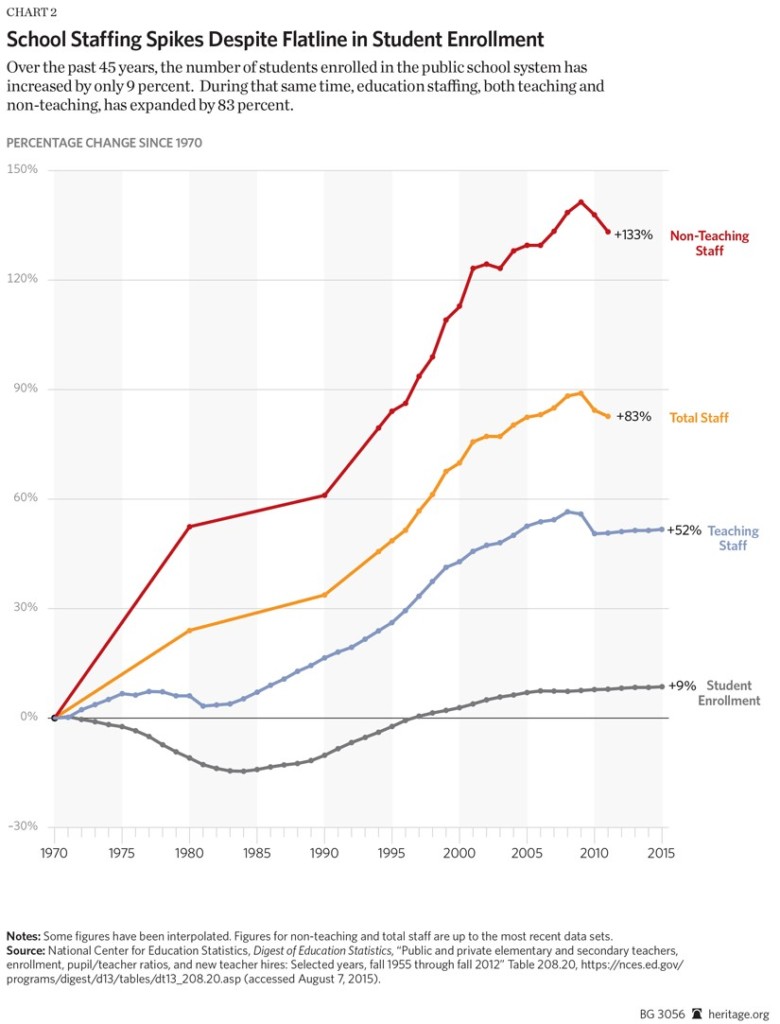Living out in a distant and pleasant patch of cactus, I noticed this week that Arizona overtook Florida in average teacher pay in the latest National Education Association report. ZONA! ZOZA! ZON … oh, wait. Neither state is near the top. The Florida news report on the NEA numbers contained the typical demands for additional state funding, but there is more going on here than state priorities.
Looking ahead, none of this is going to get easier as Florida turns Japanese – in other words, one of the oldest countries in the world. At some point this year, Florida’s elderly population will surpass the youth population according to estimates by Florida’s Office of Economic and Demographic Research. And the trend won’t stop.
Don’t get too excited about the percentage of young people declining, because the EDR projects the absolute numbers of school-age students will continue to increase by the hundreds of thousands – just not nearly by as many of hundreds of thousands as your elderly people.
Japan currently is sitting where Florida is heading. But should Floridians fear turning Japanese? The Japanese buy more adult diapers than baby diapers these days. Pensions, Medicaid … yeah, there is a lot to feel concerned about. Japan, however, has an advantage over most of the United States in the form of a better-educated student body, which it arrives at despite spending less money per pupil.
From the Organisation for Economic Co-operation and Development:
A couple of notes: The USA spends big and scores low on international exams. That’s a huge problem. Florida has been doing better than the (pathetic) American average, but the state is no Japan yet, and did you notice the part where Japan spends less than the United States but scores way better?
Okay, yeah, that needs to stop.
Finally, despite being a big spender, America does not compensate its teachers well, especially young teachers. The blame for this, however, does not lie exclusively at the state level.
The Florida Legislature is not the state’s school board. The staffing and compensation decisions of Florida public schools are determined at the local level – school boards, superintendents, principals, CFOs and a whole bunch of others budget these dollars, and those budgets include teacher pay. Given that the United States is a high-spending country, why do we have such low starting pay for teachers?
Well, in large part because of this:
Nationally, student enrollment in American public schools increased by 9 percent; non-teaching staff increased by 138 percent. I’m not here to tell you that any school can run without non-teaching staff – none can. Nor do I pretend to know what the right mix is; it probably varies. I do know this: The vast increase in non-teaching staff puts a low ceiling on what we can pay teachers.
Recently, I dug into some celebrated cases of the state’s teachers being poorly paid in the Arizona Chamber Business News. One of these cases happened before the “Red for Ed” strike, where an Arizona second-grade teacher put her paystub up on social media. A seven-year veteran, she was being paid $35,000. Yes, that was a thing, and it was awful, but it was not what it appeared.
A dive into expenditure details revealed the district spent well above the state average per pupil, and that the voters had passed a tax increase the previous year “for teachers” which mysteriously failed to reach her paycheck. Average teacher pay in this district dropped $7,885 between 2017 and 2018, but banked a healthy increase in the fund balance of carryover funds.
It is positively horrible for a seven-year teacher, especially one tasked with teaching children how to read in the early years, to be receiving such a tiny percentage of the revenue generated by her students. It is, however, *ahem* very difficult to blame this teacher’s salary exclusively on the state Legislature with a straight face.
This isn’t a matter of tweaking around the edges. Florida needs a complete re-imagining of the delivery mechanism for education. Hundreds of thousands of additional students are on the way, along with a far larger increase in elderly population. The more Japanese Florida becomes (pass the sushi over to Arizona, btw), the more acute the state’s need will grow.
There is a universe of teachers willing to work in school districts. Florida needs them. There is another group willing to work in charter schools. You need them, too. There is yet another group willing to teach in private schools. Hundreds of thousands of more kids are on the way, and there’s Grandma’s Medicaid to pay – yes, please. Then there is a group of pioneering teachers who are running their own small schools where they get to be both the teacher and the boss entirely off the bureaucratic grid.
Florida education already is far better than it used to be, and the future is brighter still. But in the years ahead, you are going to need all the help you get.






[…] Arizona nudges past Florida in teacher pay as both states turn Japanese, Redefined columnist Matthew Ladner […]
Florida absolutely has more support staff in public schools, because we are inundated with students that do not speak a word of English. They are put in the classroom, but then aides are sent in to work with the student to teach them English. They also have a huge number of counseling staff to work through all the behavior issues with the general population of students. More is going on in the public school system than in the past generations.